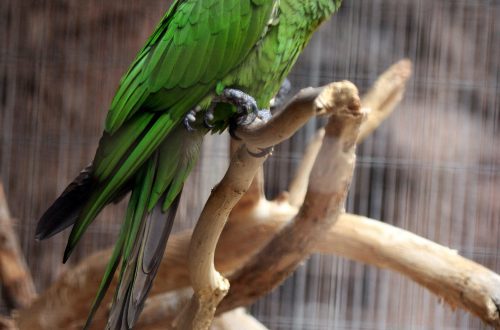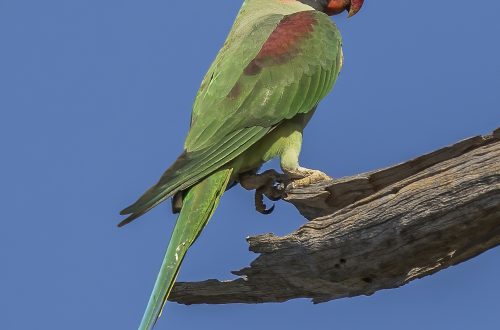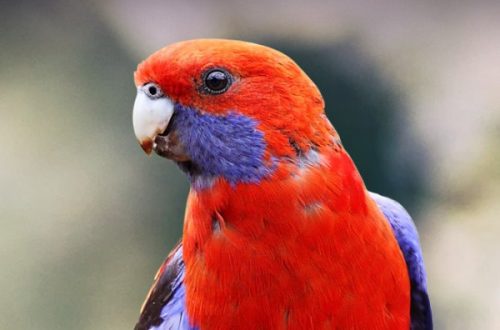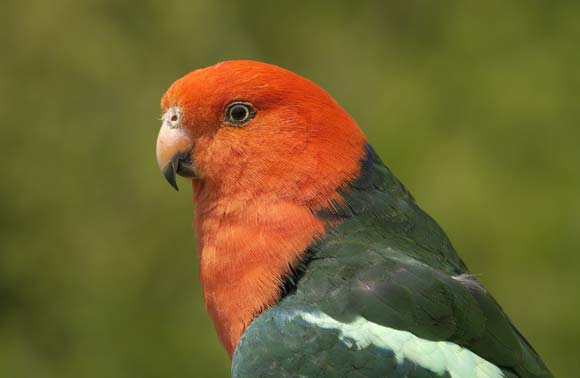
Royal parrot
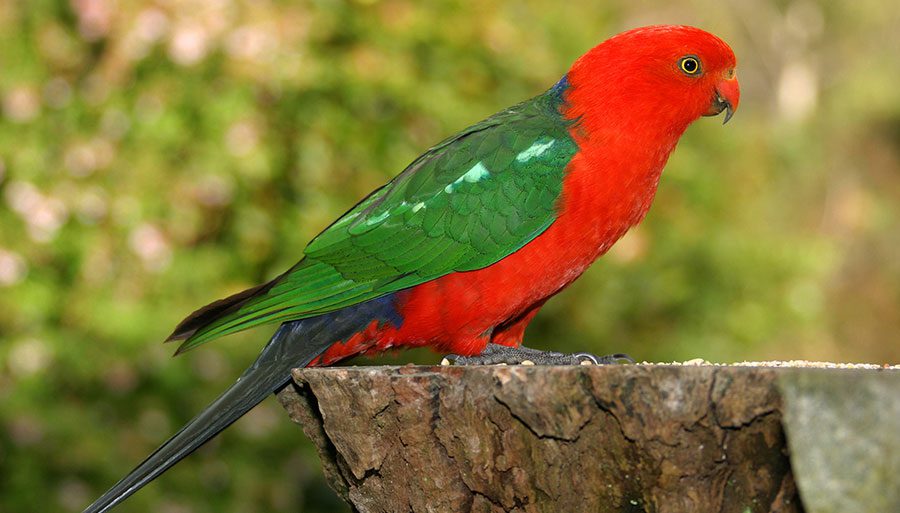 In the photo: Royal parrot (Alisterus scapularis)
In the photo: Royal parrot (Alisterus scapularis)
| Order | Parrots |
| family | Parrots |
| Race | royal parrots |
APPEARANCE
An average parakeet with a body length of about 43 cm and a weight of about 275 gr. The color corresponds to the name, the main color of the body is bright red, the back and wings are dark green, there is a white stripe on the wings. The rump and back of the neck are dark blue. The color of the tail changes from black above to blue with a red border below. Beak and eyes are orange, paws are grey. The females are colored somewhat differently. The main color of the body is greenish, the rump and rump are bluish-green, the throat and chest are green-red, turning into a red abdomen. The beak is dark – black-brown. Males molt into adult plumage at two years of age. The species includes 2 subspecies that differ in color elements and habitat. Life expectancy with proper care and maintenance is about 25 years.
HABITAT AND LIFE IN NATURE
The species lives in Australia, in the southeast, east and northeast. They prefer to settle at an altitude of 162 m above sea level, live in wooded and open spaces. In addition, they can visit agricultural lands, gardens and parks. During the breeding season, they keep to denser forests, eucalyptus groves, and river banks. Usually found in pairs or small flocks. Sometimes they gather in groups. When feeding on the ground, they are quite quiet. They are usually active in the early morning and evening, in the afternoon heat they prefer to sit on trees. The diet includes fruits, flowers, berries, nuts, buds, seeds, and sometimes insects. They also feed on crops and can damage crops.
BREEDING
The nesting season falls on September-February. Males usually lek in front of females, performing a mating dance. Birds nest in hollows and cavities of old trees, the female lays 3-6 eggs and incubates them herself. The male feeds and protects her all this time. Incubation of masonry lasts about 20 days. The chicks fledge and leave the nest at the age of weeks, for some time the parents feed them.
TABLE OF CONTENTS AND CARE
These beautiful birds, unfortunately, are not often found for sale, but they endure captivity quite well. It is better to keep them in spacious enclosures with a length of 2 meters, as they need frequent flights. Speech abilities and imitations are quite modest, just a few words at best. The birds are pretty calm. Unfortunately, adult birds are quite difficult to tame, but young individuals quickly get used to humans. The birds are quite frost-resistant, therefore, with proper hardening, they may well live in outdoor aviaries all year round, provided there is shelter. Among the shortcomings – the birds are rather sloppy, they can roll out the litter. Fruits and vegetables can be thrown into drinkers. In the presence of a female, the male gently and quietly sings to her. There should be enough perches in the aviary with the bark of tree species allowed for birds. The perches must be of the correct diameter. Do not forget about the feeders, drinkers, swimsuits, koposhilki. If the enclosure is located outside, non-poisonous trees can be placed inside.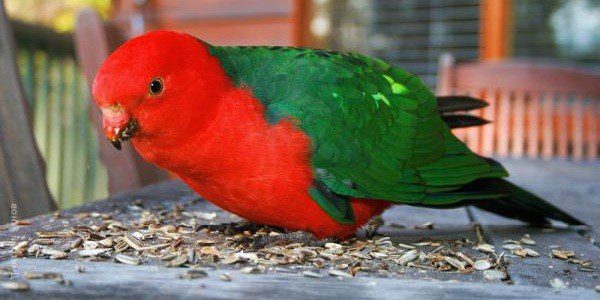 In the photo: a royal parrot pecks at seeds
In the photo: a royal parrot pecks at seeds
FEEDING
The basis of the diet should be grain feed. It should contain – canary seed, millet, oats, safflower, hemp, Senegalese millet, a limited number of sunflower seeds. Offer the bird sprouted cereals, legumes, corn, greens (chard, salads, dandelion, wood lice). For vegetables, offer carrots, celery, zucchini, green beans, and green peas. From fruits, these birds love apple, pear, banana, cactus fruits, citrus fruits. Nuts can be offered as a treat – hazelnuts, pecans, or peanuts. Don’t forget branch forage, sepia, and mineral supplements.
BREEDING
When keeping birds in an aviary, it is not difficult to breed them. To do this, you must have a heterosexual, molted and healthy pair of birds aged at least 3 – 4 years. Birds should not be relatives, they should be well-fed and in good condition. Only one pair should be in the enclosure, as they can be quite aggressive during the mating season. Make sure a pair is formed, as males are often picky about their choice. The nesting house should be 30x30x150 cm, letok 12 cm. Wood shavings or sawdust of hardwoods are poured onto the bottom. There should also be a stable ladder inside the house so that the birds can safely get out. Before hanging the bird house, it is necessary to prepare – introduce animal proteins, more greens and sprouted food into the diet. After the chicks leave the house and become independent, they must be separated from their parents.



